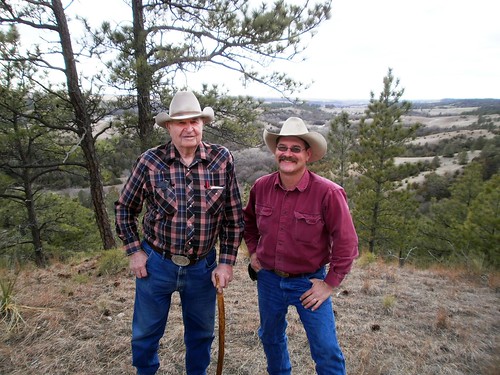
Cowboys are known for being good story tellers, and Roy and Steve Breuklander are no exceptions.
Roy might tell you how his grandparents homesteaded in Cherry County back in the 1880s. Roy’s son, Steve, might share how his family started one of the first canoe outfitters in Niobrara Valley.
The common thread in these stories is their love of the land, which isn’t difficult to understand. Their Sunny Brook Ranch hugs the Niobrara River for over a mile, and it rises above the river valley into pine-covered bluffs full of wildlife and beautiful views.
This scenic setting has led to development along the river, causing property values to rise sharply. A few years ago, Roy was looking to retire, and Steve wanted to purchase his dad’s property.
But with the steep increase of land prices, Steve simply couldn’t afford to buy the ranch. The family had been offered above market value for bits and pieces of their ranch, but they didn’t want to see it broken up, so they declined all offers.
The Breuklanders found a solution by working with USDA’s Natural Resources Conservation Service (NRCS). NRCS offers the Farm and Ranch Lands Protection Program (FRPP), which provides matching funds to help purchase development rights to keep farm and ranchland in agriculture uses.
For the 1,124-acre Sunny Brook Ranch, NRCS partners The Nebraska Environmental Trust and The Nebraska Land Trust provided up to 50 percent of the fair market value of the conservation easement, while NRCS provided the other 50 percent.
The easement allows landowners to continue agricultural operations in perpetuity while the land remains private property and on tax rolls.
The program was originally intended to assist with urban sprawl around densely populated areas. But in Nebraska, the program has been valuable in protecting historically significant, culturally unique, and wild and scenic places from development.
The program allowed the Breuklanders to keep their ranch intact and provided money for Roy to retire. The easement’s no-development condition lowered the value of the land, making it more affordable for Steve to buy.
The easement contains provisions for recreational activities like hiking, hunting and trail rides, as well as rangeland management options like brush management, prescribed fire and more—so Steve can continue not only ranching, but also his canoe outfitting and hunting operations.
“If something special isn’t protected, we can destroy the things we love the most,” he says, summarizing the family’s participation in FRPP.
Find out more about the Farm and Ranch Lands Protection Program.
Check out more conservation stories on the USDA blog.
Follow NRCS on Twitter.
